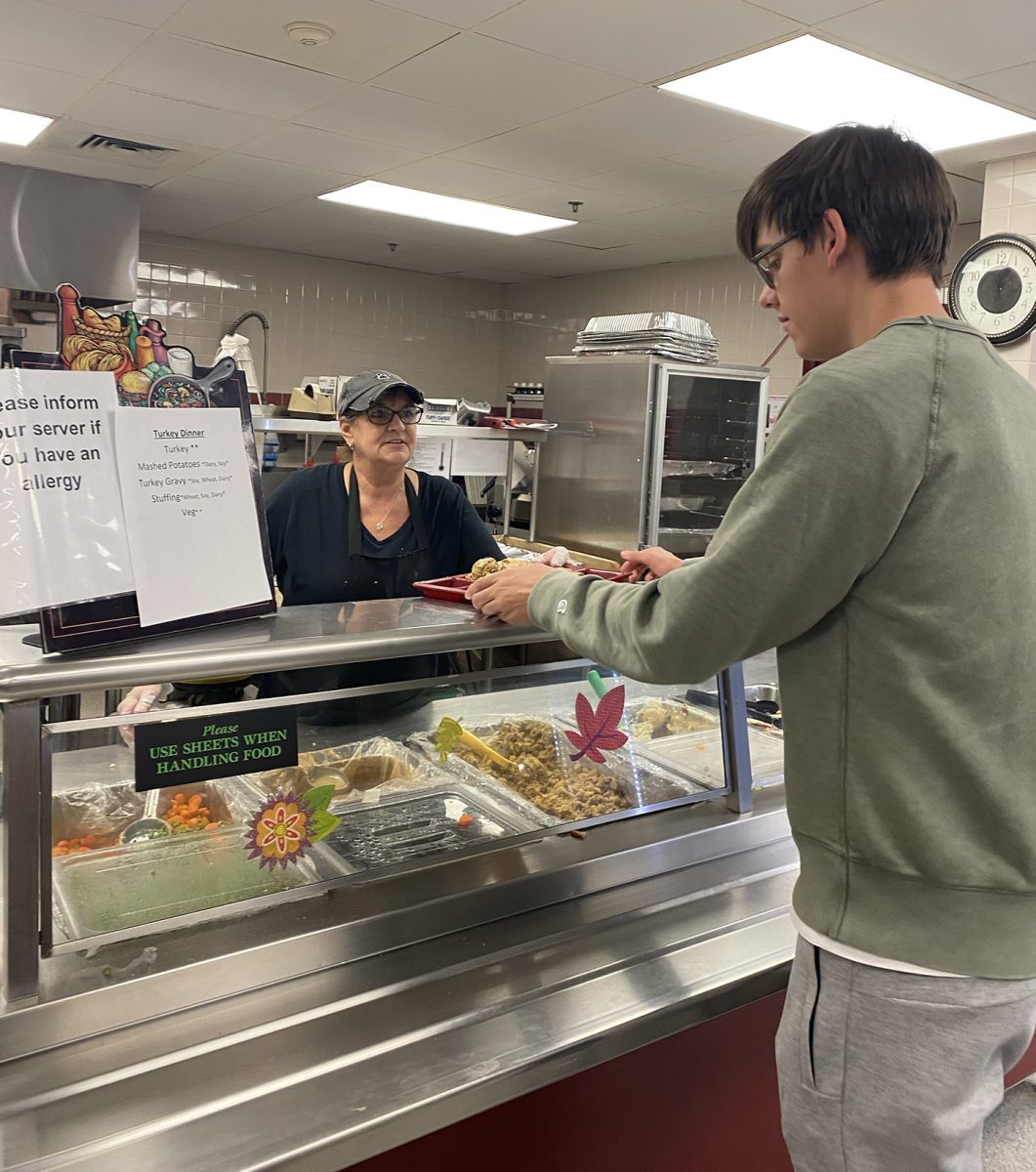Each school day WHS students line up in the cafeteria to purchase their lunches. But have they ever stopped to wonder how the food is prepared? Or even where it comes from? A lot more goes on behind the scenes of the WHS food service than meets the eye (or stomach).
One feature of WHS lunches that stands out from other schools is the wide variety of choices.
“There are many more options at WHS,” chemistry teacher Shelley Cook said, who is new to WHS this year. “For example, there were no real sandwiches at the previous high school [I worked at]. It was just peanut butter and jelly, but here they make them fresh right in front of you.”
Another unique aspect of the meals is the use of fresh produce.
“Our nutritionist goes over to Land’s Sake Farm and has gotten carrots and potatoes–whatever they have to offer,” food services manager Peggy Paronian said.
The majority of the school’s food, however, comes from two vendors: Thurston Foods and Driscoll Foods.
“We are part of a tech bid community through the National School Lunch Program [NSLP],” food services director Charlie Kotufo said. “We have an administrator who does the negotiating for us and we get the best prices for certain products.”
While a good price point is an important factor in running a school cafeteria, quality is as well.
“We have cheaper prices for some items and when it comes in here and it’s cheap for a reason, we’ll bypass it and go to the next level up. There’ll be maybe three or four different types of that product [varying in price],” Kotufo said. “Sometimes we will overpay to get better quality food, but it’s also not sustainable to do that in every aspect. We have to find a balance.”
Guidelines issued by the United States Department of Agriculture (USDA) and the NSLP have regulated the amount of salt and wheat in school foods since 2012, with regulations on sugar being added soon as well, posing an additional challenge.
“A lot of our distributors [don’t] manufacture goods that are lower in sodium to keep up with regulations. So we have to manipulate the menu through some lower sodium foods to average out the amounts,” Kotufo said. “We also have a small window to use ‘white’ products [white flour and sugar], so we do the pasta, but then we have to sacrifice the rice, unfortunately, so we do brown rice. We have to pick our battles.”
Many students wonder why these regulations are in place as they affect the taste of the food.
“I think that the [regulations] make people add more salt to the foods,” senior Anna Sumsion said. “I also think people are less likely to get something like a burger or sandwich if it’s [on] whole wheat.”
While students may not like the changes in ingredients the cafeteria must abide by, many do appreciate that lunch is now always free. The state government began offering free lunch to students during Covid and plans to continue doing so. This has led to about a 20% increase in WHS students who eat the school lunch post-Covid. Contrary to popular belief, this funding has not impacted the quality of the food, but rather has just increased the quantity of people that the school is able to serve.
“We now serve about 400 lunches a day, and that’s not counting anybody who wants a second lunch,” Paronian said.
All students attending public and charter schools in Massachusetts receive free breakfast and lunch because of this state and federal funding under House Bill 714 and the NSLP. As full state participation is required for Massachusetts to receive the federal funding, even towns where many students can afford to buy lunch have received this benefit.
“The aim of [the program] was to ensure that kids in school are fed and getting a nutritious meal,” deputy chief of staff and legal counsel to the state senate minority leader Hirak Shah said. “When the budget was signed in 2023, it was highlighted that funding universal school meals was an investment in the children. During the pandemic, we heard a lot about food insecurity, so this program was aimed to address [that] as well.”
The state regulations help to ensure that students are eating healthy, regardless of how they eat at home. The hope is that they will continue these healthy habits into the future.
“School is where we learn, so why not teach students how to eat properly?” Kotufo said. “A diet is a staple of physical and mental health. From focusing and participating in class during the day and in sports in the afternoon and so forth, food and nutrition are part of an educational movement.”
While the school food must follow guidelines, this does not mean that students’ feelings are brushed aside.
“We try to get the kids’ opinions; what is it that you want? You have to have nutrition in there, but you also have to make them happy,” head cook Renee Bisson said. “I encourage students–they come up to my line and they ask, ‘What is that?’ I’ll give them a bite and see if they like it. They give me their feedback and then some items we just cancel and other items we add.”
Between the options and time that goes into making breakfast and lunch five days a week, the food services team shows genuine dedication to the students and takes pride in being able to satisfy them.
“I think it’s clear there’s care put into the food,” sophomore Ricky Pomianek said. “Definitely with the meals that require the lunch lady to assemble it for you–it seems like there’s a lot of care in those lunches.”




